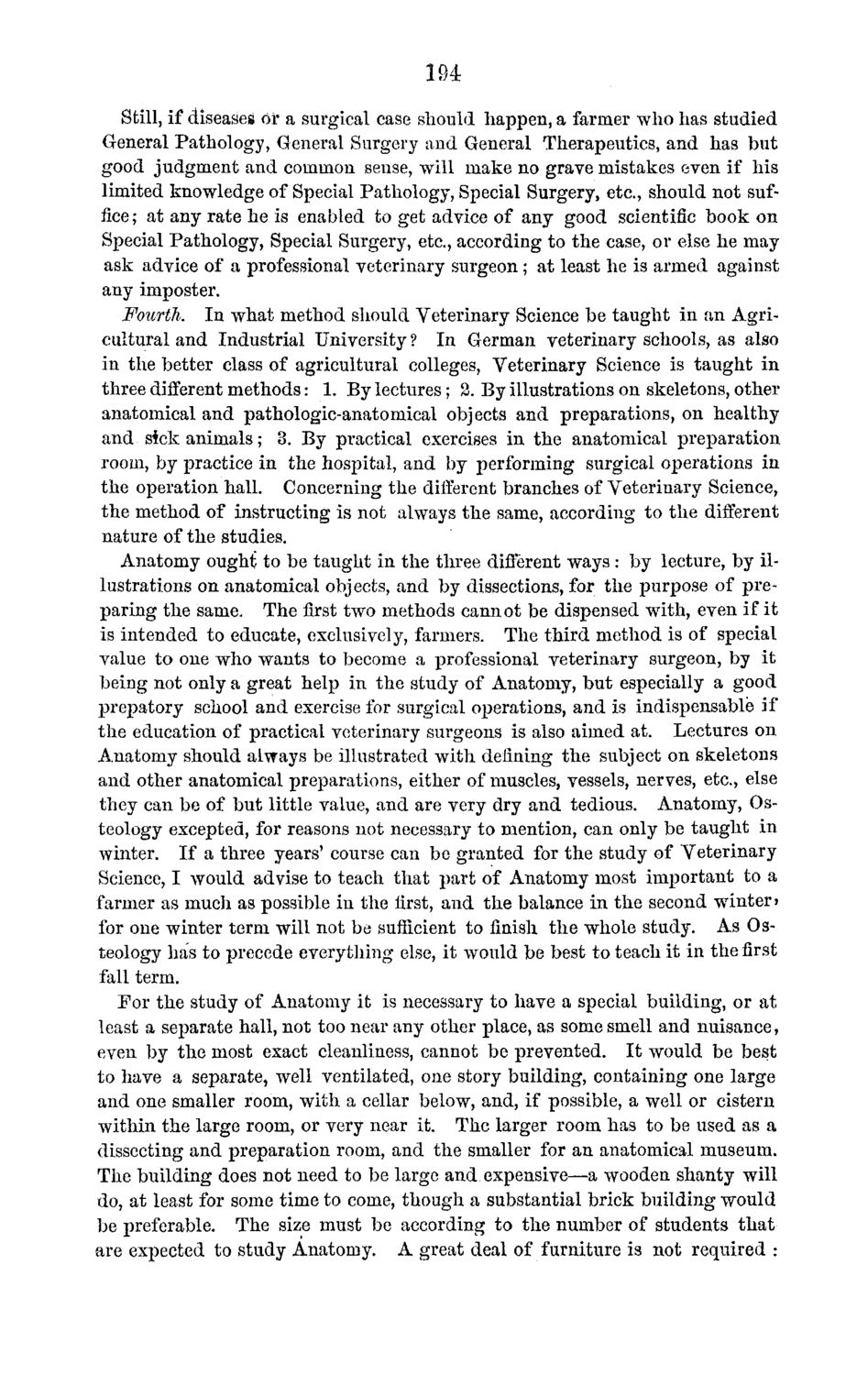| |
| |
Caption: Board of Trustees Minutes - 1870
This is a reduced-resolution page image for fast online browsing.

EXTRACTED TEXT FROM PAGE:
194 Still, if diseases or a surgical case should happen, a farmer who has studied General Pathology, General Surgery and General Therapeutics, and has but good judgment and common sense, will make no grave mistakes even if his limited knowledge of Special Pathology, Special Surgery, etc., should not suffice; at any rate he is enabled to get advice of any good scientific book on Special Pathology, Special Surgery, etc., according to the case, or else he may ask advice of a professional veterinary surgeon; at least he is armed against any imposter. Fourth. In what method should Veterinary Science be taught in an Agricultural and Industrial University ? In German veterinary schools, as also in the better class of agricultural colleges, Veterinary Science is taught in three different methods: 1. By lectures; 2. By illustrations on skeletons, other anatomical and pathologic-anatomical objects and preparations, on healthy and sick animals; 3. By practical exercises in the anatomical preparation room, by practice in the hospital, and by performing surgical operations in the operation hall. Concerning the different branches of Veterinary Science, the method of instructing is not always the same, according to the different nature of the studies. Anatomy ought to be taught in the three different ways: by lecture, by illustrations on anatomical objects, and by dissections, for the purpose of preparing the same. The first two methods cannot be dispensed with, even if it is intended to educate, exclusively, farmers. The third method is of special value to one who wants to become a professional veterinary surgeon, by it being not only a great help in the study of Anatomy, but especially a good prepatory school and exercise for surgical operations, and is indispensable if the education of practical veterinary surgeons is also aimed at. Lectures on Anatomy should always be illustrated with defining the subject on skeletons and other anatomical preparations, either of muscles, vessels, nerves, etc., else they can be of but little value, and are very dry and tedious. Anatomy, Osteology excepted, for reasons not necessary to mention, can only be taught in winter. If a three years' course can be granted for the study of Veterinary Science, I would advise to teach that part of Anatomy most important to a farmer as much as possible in the first, and the balance in the second winter) for one winter term will not be sufficient to finish the whole study. As Osteology has to precede everything else, it would be best to teach it in the first fall term. For the study of Anatomy it is necessary to have a special building, or at least a separate hall, not too near any other place, as some smell and nuisance, even by the most exact cleanliness, cannot be prevented. It would be best to have a separate, well ventilated, one story building, containing one large and one smaller room, with a cellar below, and, if possible, a well or cistern within the large room, or very near it. The larger room has to be used as a dissecting and preparation room, and the smaller for an anatomical museum. The building does not need to be large and expensive—a wooden shanty will do, at least for some time to come, though a substantial brick building would be preferable. The size must be according to the number of students that are expected to study Anatomy. A great deal of furniture is not required :
| |